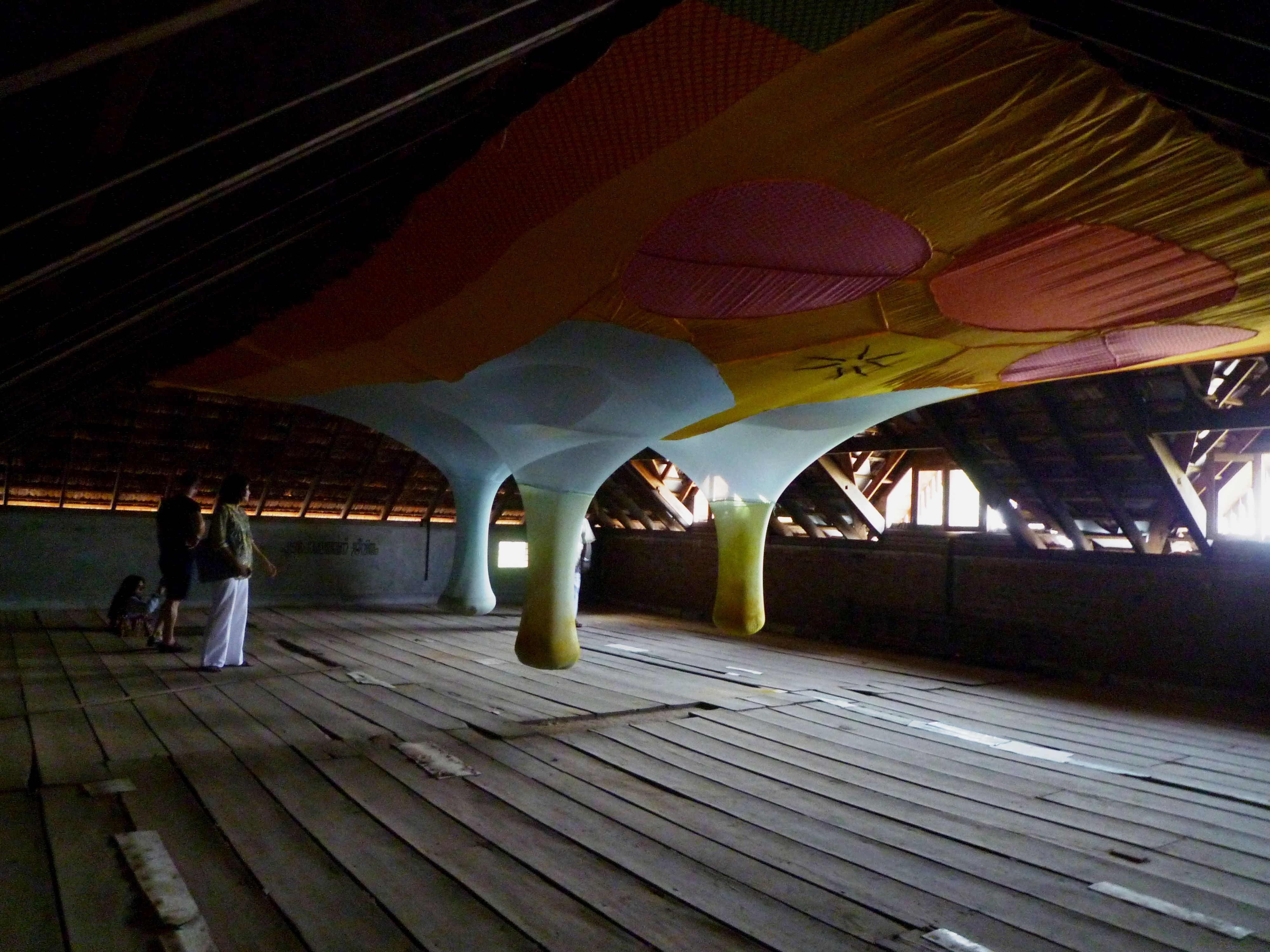08 Feb 2013
Kochi Muziris Biennale | review

India’s first Biennale debuted on 12/12/12 in Fort Kochi after months of build up in the form of announcements, artists’ visits, talks, support and controversies. Similar to anything new – one may refer to it as teething problems – there were certain glitches which have been attributed to the sudden withdrawal of government support in terms of funding. However the founders, directors and curators (also artists in their own right) of the Kochi-Muziris Biennale – Bose Krishnamachari and Riyas Komu – ensured that India’s much needed first biennale did finally take off on the designated day.
Kochi has a very symbolic and cosmopolitan history of trade and travellers that was reflected through the interaction of various artists with spaces and people during the Biennale. The biennale, as described by the curators, provided an occasion to explore the critical imagery as a mechanism to process, reflect and rewrite history; thereby converging different histories, locals, individuals and collectives with a creative space for expression within a contemporary context.
The quaint town of Fort Kochi transformed into an art venue with the buzz of the word ‘biennale’ being used by everyone from the tuk-tuk drivers who guided one to the next site, to the vendors selling “biennale water” along the pier of Chinese fishing nets and Fort Kochi beach, which was also a biennale venue. The Biennale exhibited the works of 94 artists from 23 countries in spaces located across Fort Kochi – from old warehouses and yards, to the water-front and the old Durbar Hall.
Kerala, Kochi in particular, has been a centre of social activist movements that instigates a discourse on any issue that promotes public interest and involvement. At the ferry terminal on the way to the Durbar Hall, one saw anti-biennale posters replacing Biennale posters and a few weeks after the opening there were two works anonymously vandalised. However, the participating artists have been extremely supportive of the initiative of the first biennale and the artists in fact re-did the wall mural that had been vandalised.
Being an artist-led biennale, there was a different sense of aesthetic understanding that conveyed itself within new parameters of artistic freedom contained by the framework of a biennale. The nature of the venues too was instrumental in furthering this aspect, where each artist’s works responded to specific elements co-related to history and space.
Aspinwall House, a large sea-facing heritage property, was the main venue of the Biennale which showcased majority of the Biennale artists. This venue included works that were a result of artists’ time and research in Fort Kochi (Giuseppe Stampone’s tuk-tuk), to site-specific installations (Srinivas Prasad and Shreyas Karle’s interventions in the garden). For artists who had created individual projects and works, there were separate spaces/ rooms inside Aspinwall House dedicated to a single artist, ensuring space for the work and response from the viewers experiencing it. This was also the case in the other venues spread over Fort Kochi.
Cabral Yard, across the road from Aspinwall House was an excavation site unearthing Sudarshan Shetty’s monumental sculpture. This work was still in the process of being installed at the opening, but with the ephemeral quality of the yard, this could well have been looked at as a performance piece, meant to be. The raw and organic feel of the sites, ensured that the viewers actively engaged with venues and spaces. This process lent itself beyond just viewing art to a level of experiencing and engaging with it at a personal level. Anita Dube’s interactive installation at Pepper House (an old warehouse by the waterfront) involved climbing ladders around the room to view her work through floor windows into the attic from varied angles. Moidu’s Heritage, formerly the property of a coir trading company was a venue that explored the organic feel of a space being explored for the first time. The nature of the works in this space reflected a similar powerful sensitivity, all the way up to Ernesto Nesto’s installation with spices that enveloped the viewer visually with the comforting smells of Kerala.
For a viewer exploring the town for the first time the Kochi-Muziris Biennale promoted and prompted the visitors, artists and locals into new planes of interaction that were all offset on the basis of contemporary art, thereby successfully taking “art to the people”, while ensuring familiarity with the place. The Dutch Warehouse, Calvathy Canal Boat Dock, David Hall and the Parade Grounds, were amongst the other venues between the docks and the old Jewish town located within Fort Kochi.
The works created for the biennale ranged from painting, sculpture, installations, film and new media to the more ephemeral site-specific works, projects and performances. There have also been a number of talks and conferences by internationally renowned curators and people who have touched upon various projects that touched upon similar concerns addressed by the biennale and artists. Similar to other biennales in the world, there were also a number of collateral events on at galleries and artists’ initiated projects at other spaces. After the opening of the first edition of the Biennale itself, Kochi has been termed as the Biennale city. This can be looked at as a positive sign for future development and support of the Kochi-Muziris Biennale.
More:
Read interview with Bose Krishnamachari and Riyas Komu
Similar content
posted on
09 Dec 2012
posted on
14 Jan 2013
posted on
10 Dec 2014
posted on
28 Mar 2011
posted on
16 Nov 2016
posted on
04 Dec 2018





